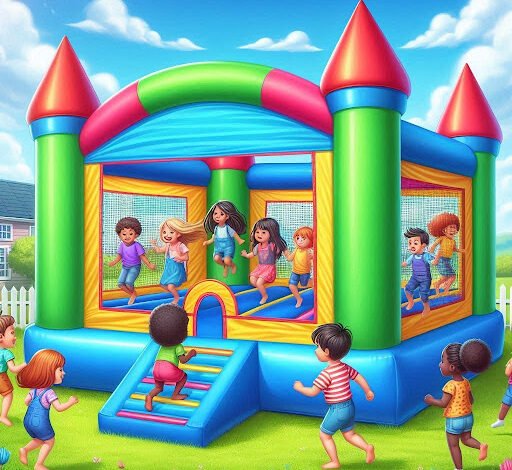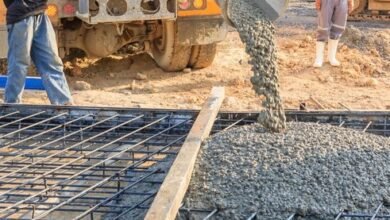Therapeutic Benefits of Bounce Houses for Kids With Sensory Processing Issues

For many children, a bounce house is a symbol of pure joy – a vibrant inflatable wonderland that beckons with endless jumping fun. But for kids with sensory processing issues (SPD), these inflatable structures can offer much more than just entertainment. Bounce houses can be a valuable therapeutic tool, providing a safe and stimulating environment that addresses specific sensory needs.
Key Highlights
- Bounce houses offer more than just fun for children with Sensory Processing Issues (SPD), providing a safe and stimulating environment for their specific sensory needs.
- By providing deep pressure, vestibular stimulation, and tactile input, bounce houses can improve proprioception, balance, and emotional regulation in children with SPD.
- Choosing the right size, features, and sound level of a bounce house creates a positive and therapeutic playtime experience for children with SPD.
Image Credit Goes to Happy Jump Bounce House Manufacturer
Understanding Sensory Processing Issues
Sensory processing disorder (SPD) is a condition that affects how the brain processes information received through the senses. Children with SPD may experience sensory input as overly intense, under-responsive, or a combination of both. This can lead to challenges with everyday activities, social interaction, and emotional regulation.
There are three main types of sensory processing:
- Proprioception: This refers to the body’s awareness of its position in space and movement.
- Vestibular: This relates to the sense of balance and movement.
- Tactile: This is the sense of touch.
Children with SPD may have sensitivities in one or more of these areas. For example, a child with tactile sensitivities might dislike certain textures, while a child with vestibular sensitivities might struggle with activities that involve spinning or heights.
Bounce Houses as Sensory Gyms
Bounce houses provide a unique opportunity to address these sensory needs in a fun and engaging way. Here’s how:
- Proprioceptive Input: The act of jumping and climbing in a bounce house provides deep pressure throughout the body, which can be calming and organizing for children with proprioceptive sensitivities.
- Vestibular Input: The bouncing movement stimulates the vestibular system, which helps with balance and coordination. This can be beneficial for children who crave movement or struggle with dizziness.
- Tactile Input: The inflatable material of a bounce house offers a variety of textures for children to explore. This can be helpful for children who seek out tactile input or those who are working on desensitizing to certain textures.
Benefits Beyond the Bounce
The therapeutic benefits of bounce houses for kids with SPD extend beyond the sensory input they provide. Here are some additional advantages:
- Improved Motor Skills: Jumping and climbing in a bounce house strengthens core muscles, improves balance, and promotes coordination.
- Increased Social Interaction: Bounce houses can be a great way for children with SPD to interact with other children in a safe and controlled environment.
- Enhanced Mood Regulation: The repetitive motion of bouncing can be calming and help regulate emotions.
- Sensory Integration: Bounce houses provide a multi-sensory experience that can help children learn to integrate sensory information more effectively.
Finding the Right Bounce House
Not all Inflatable bounce houses are created equal when it comes to sensory needs. Here are some things to consider when choosing a bounce house for a child with SPD:
- Size: A smaller bounce house might be less overwhelming for a child who is easily overstimulated.
- Features: Opt for a bounce house with features that cater to specific sensory needs. For example, a ball pit can provide additional tactile input, while a slide can offer vestibular stimulation.
- Sound: Some bounce houses have built-in music or sound effects. Choose one that is quiet or offers volume control if loud noises are a concern.
Creating a Sensory-Friendly Bounce House Experience
Here are some additional tips for creating a positive and therapeutic bounce house experience for a child with SPD:
- Set Time Limits: Short bursts of bouncing can be more beneficial than extended sessions.
- Offer Breaks: Allow the child to take breaks outside the bounce house when needed.
- Provide Comfort Items: Bring along a favorite stuffed animal or blanket for added comfort.
- Supervise Closely: Always supervise children while they are playing in a bounce house.
Conclusion
Bounce houses can be a valuable tool for parents and occupational therapists working with children who have SPD. By providing a safe and stimulating environment, bounce houses can help address sensory needs, improve motor skills, and promote social interaction. Remember, the key is to choose a bounce house that aligns with the child’s specific sensory preferences and to create a positive and supportive playtime experience.





